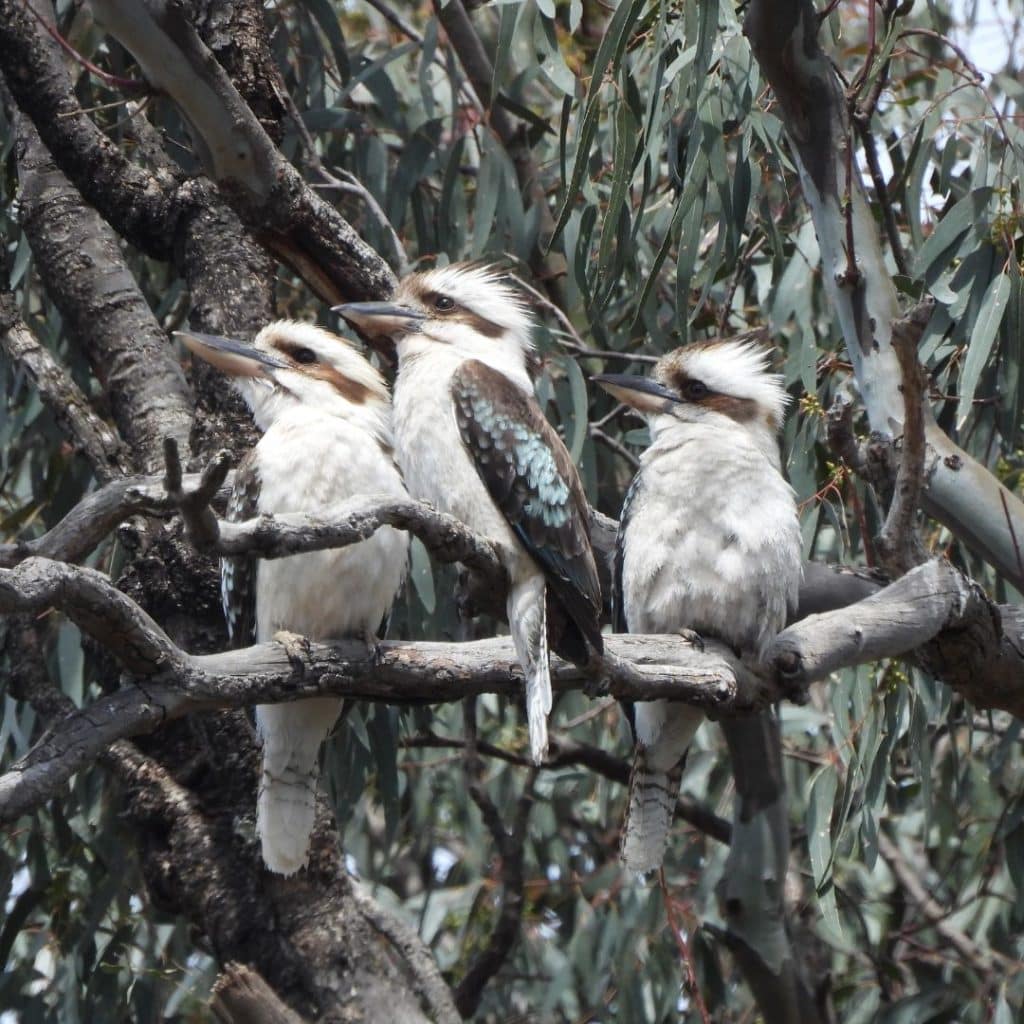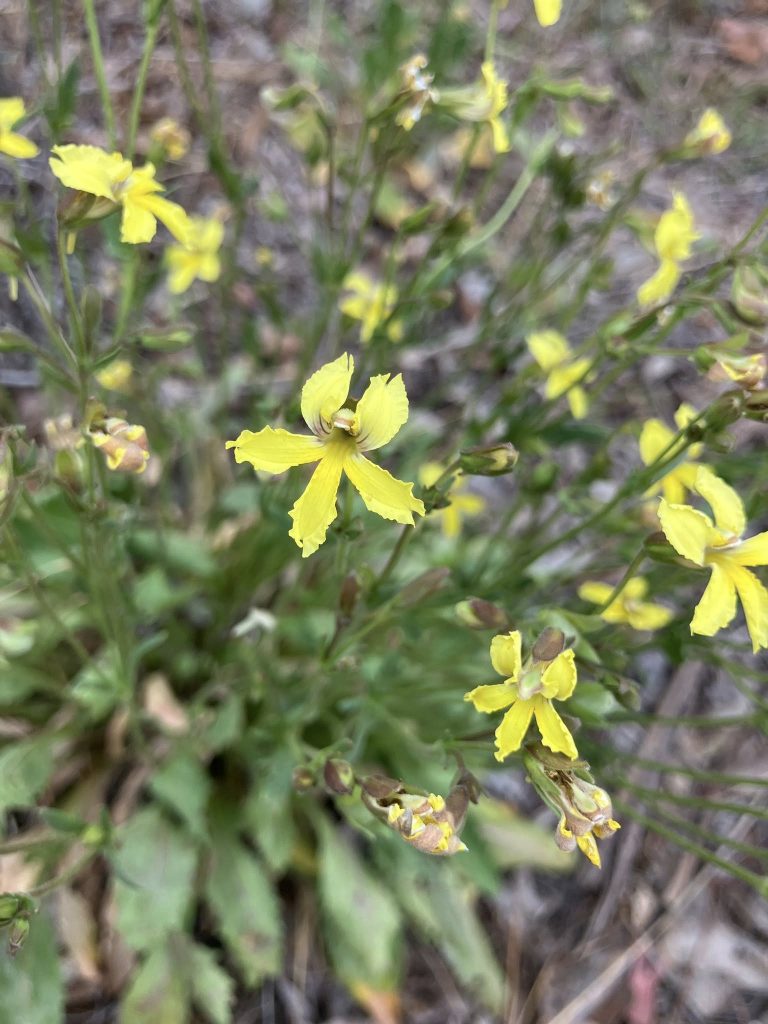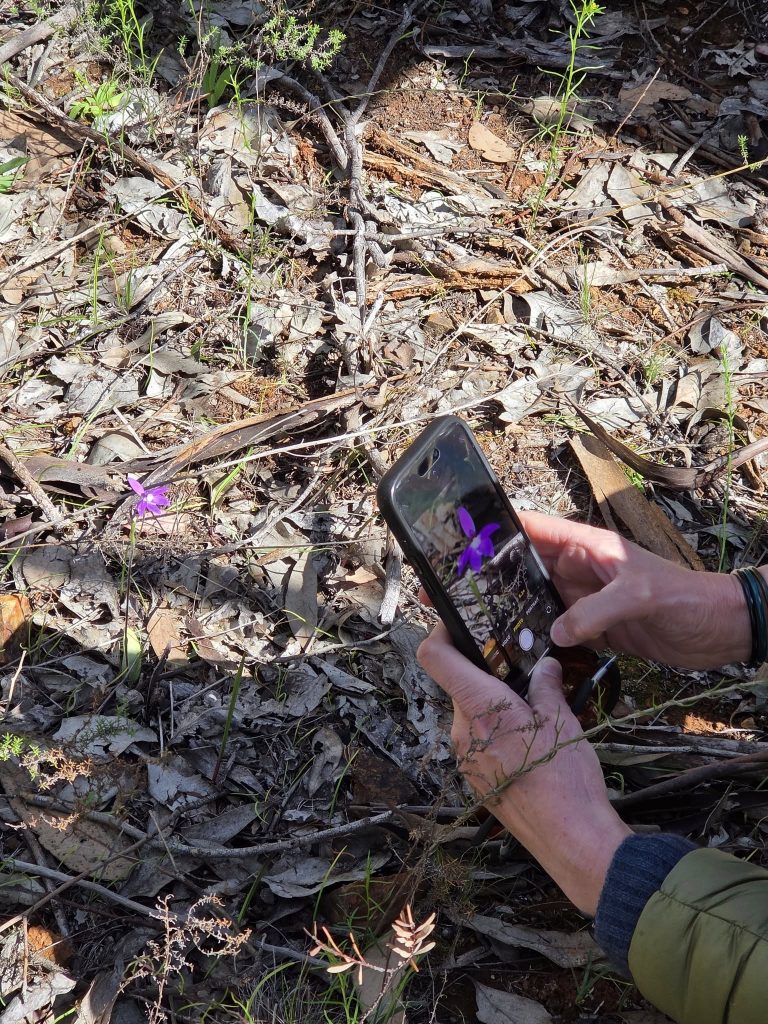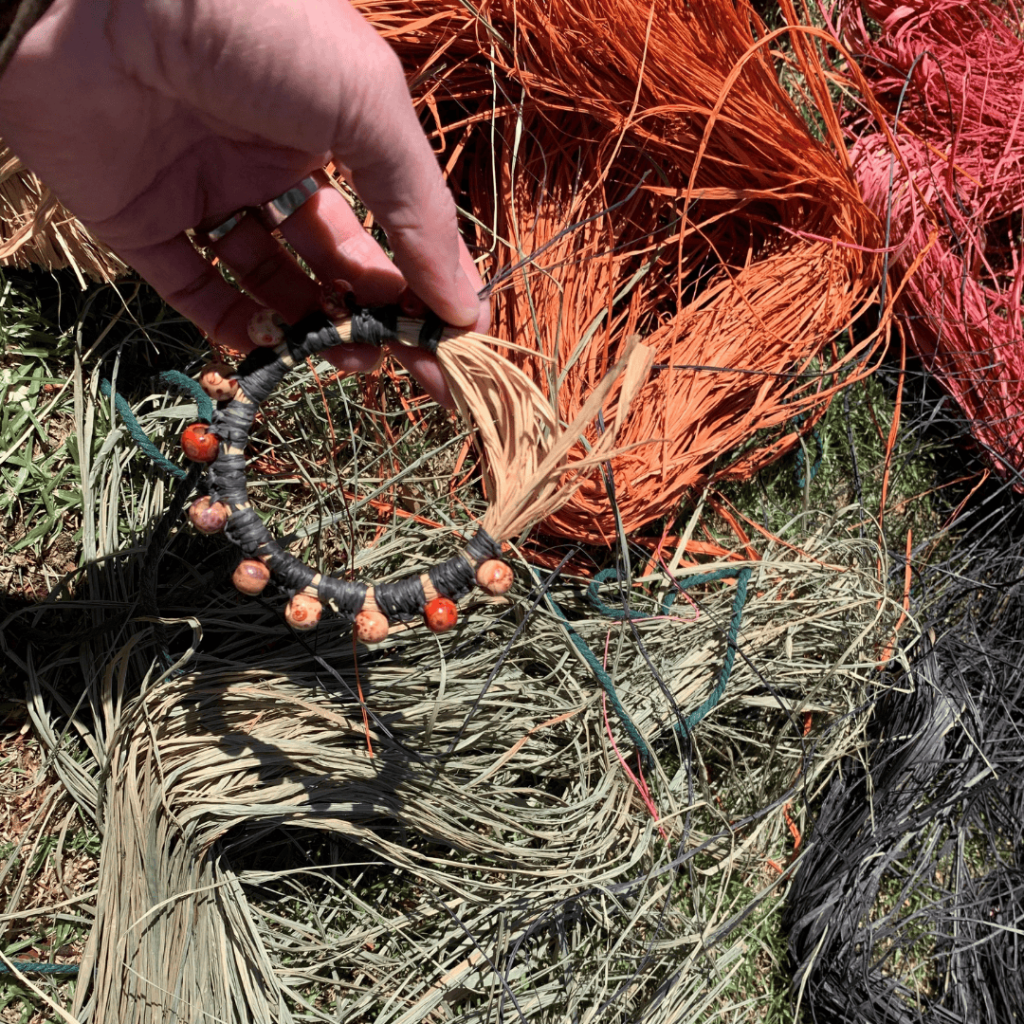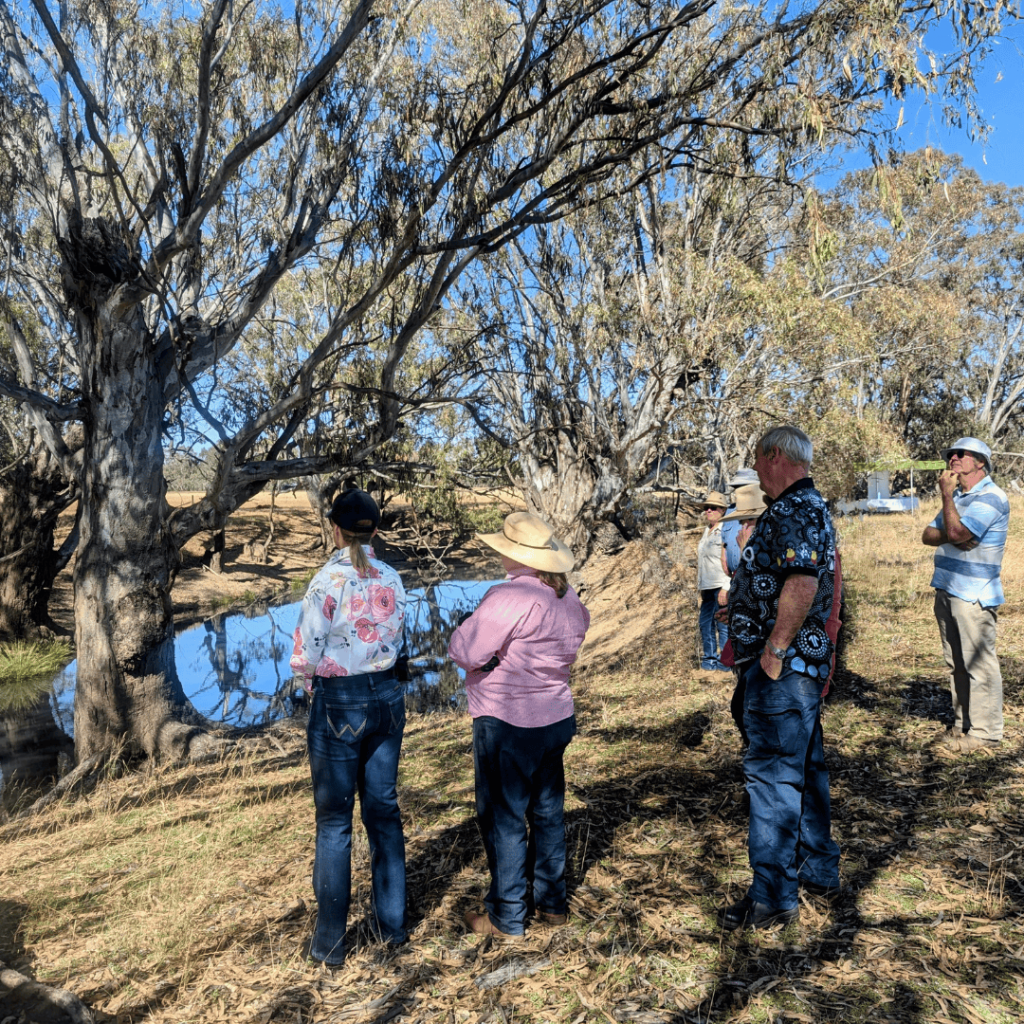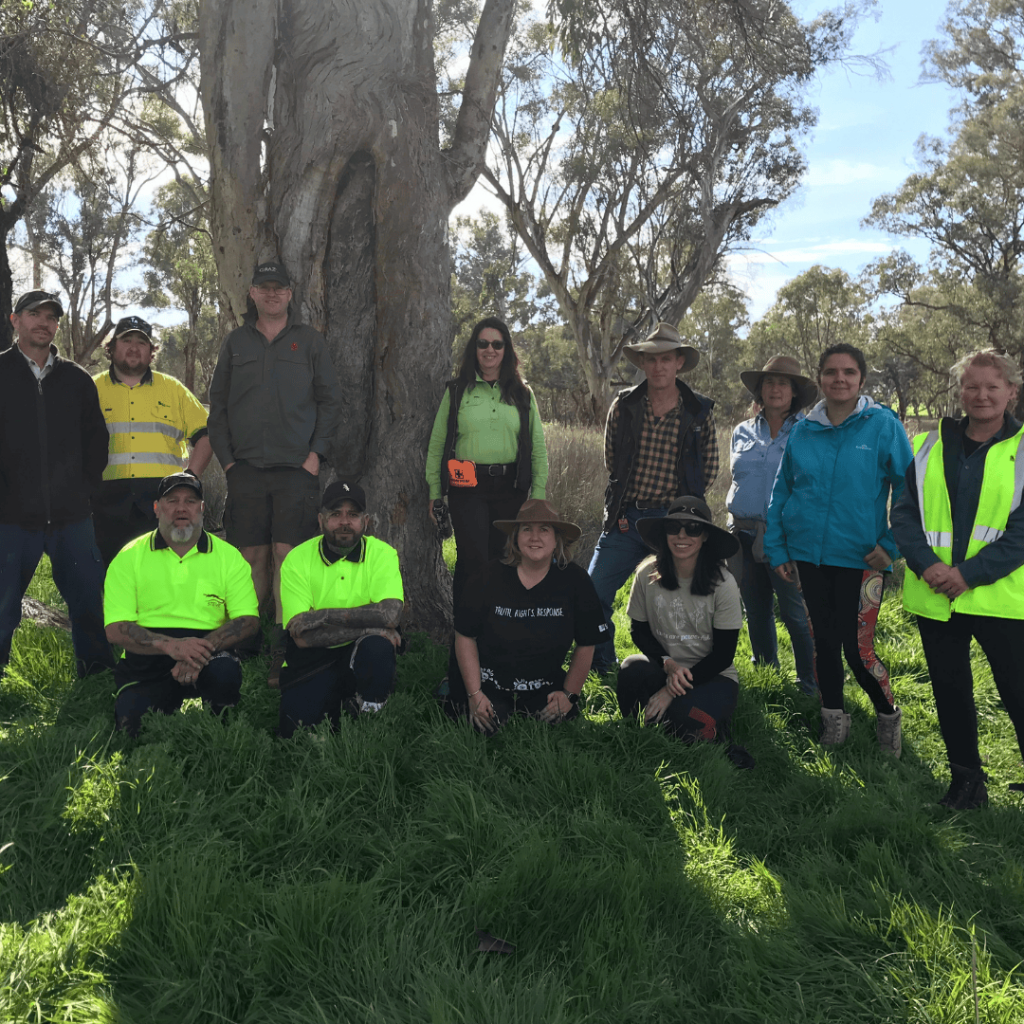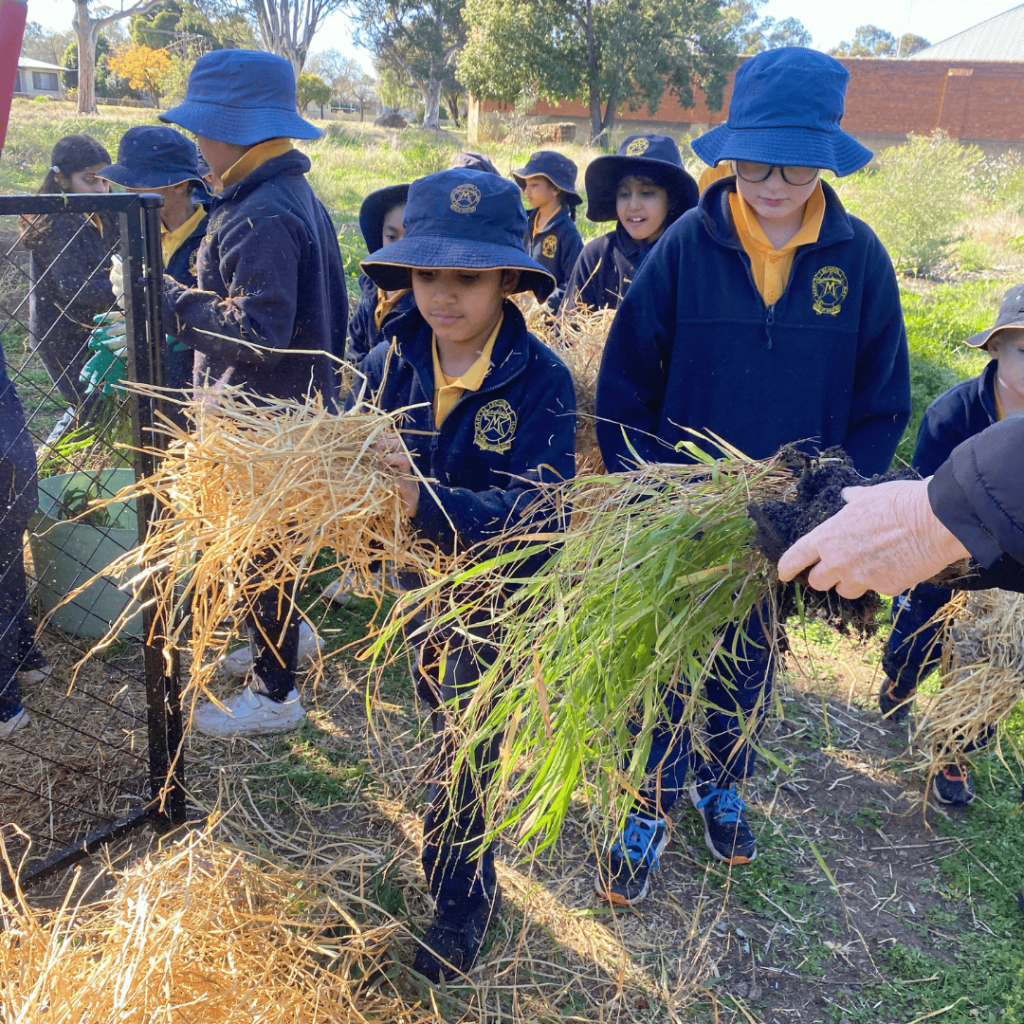- All
- Biodiversity
- Bushfire
- Coolamon Landcare Group
- Dam Management
- Drought
- Eastern Riverina Landcare Group
- Education
- Erosion and Degradation
- Grazing and Pastures
- Hay Plains Landcare Group
- Indigenous Management
- Junee Area Landcare Network
- Kyeamba Valley Landcare Group
- Lachlan Fold Wildlife Action Group
- Livestock
- Mental Health
- Murrumbidgee Field Naturalists
- Narrandera Landcare Group
- Native Vegetation
- Native Wildlife
- Revegetation and Restoration
- Riverina Highlands Landcare Network
- Rivers and Wetlands
- Soil Management
- Tarcutta Valley Landcare Group
- Technology
- Threatened Species
- Wagga Wagga Urban Landcare Group
- Weeds
- Yanco Creek and Tributaries Advisory Council (YACTAC)
- Youth and Schools
Case Study: Bridging the Landcare knowledge gap with a BioBlitz
Landcare groups spend thousands of volunteer hours restoring habitat. Telling the stories of their efforts and storing maps and surveys of a group are sometimes forgotten about until there is no sign of the records. As people get older and Landcare groups fold and change there is a need to store information built up by…
Case Study: Small team, Big Discovery at Junee Reefs
Junee Regenerative Landcare is trying to focus on more hands-on activities to reconnect people with the local landscape. At the Junee Reefs Bioblitz participants recorded 78 observations and 52 species, including one never recorded in the shire. A great result from a small start! Case Study: Small Team, Big Discovery at Junee Reefs Case Study…
Case Study: Getting the word out about Landcare
A lack of communication channels, combined with low-capacity communication skills amongst individuals, has left Landcare groups struggling to connect with their community, share successes and recruit new members. Important updates, opportunities and event announcements are often overlooked, curbing participation and local awareness within communities, adding to the volunteer burnout. Without someone skilled in media, social posts, or public speaking, many groups miss out on effective storytelling and broader engagement,…
Case study: Discovering Spring’s Hidden Treasures in Kindra State Forest
Coolamon Landcare Group wanted to encourage the local community to reconnect with nature and rediscover the unique biodiversity of Kindra State Forest. The forest had always been well-loved, yet many people were unaware of its rich orchid population and the subtle seasonal changes that make it so special. Driven by curiosity and care, the group…
Case Study 3-6: Engaging Year 8 in Caring for Country
Murrumbidgee Landcare Inc and Nari Nari Tribal Council facilitated a Caring for Country Day for year eight students at Hay War Memorial High School The issue Many Year 8 students feel disconnected and seek ways to contribute and feel like they belong in society. Year 8 Hay War Memorial High School Science Teacher Miss…
Case Study 3-9: Cultural Connections in Conservation
A field day at ‘Allandale’ in Narrandera, exploring the connection between Cultural heritage and biodiversity conservation. The issue Cultural connections in Australian conservation face several challenges, including the difficulty of mainstream society recognising intangible Cultural resources and integrating traditional ecological knowledge into mainstream frameworks. Systemic barriers, such as historical disconnection from policy and…
Case Study 2-8: Fire Management & Weed Identification in the Tarcutta Hills
Building knowledge around fire management techniques and weed identification for local landholders in the Tarcutta Valley and Kyeamba Valley Landcare Groups The issue The Tarcutta Hills Reserve is a 738-hectare Reserve on the lower western slopes of the Great Dividing Range in central west New South Wales. This Grassy White Box Woodland is…
Case Study 2-6: “Dirt Eats Too” Waste Management and Soil Conservation Program
Cultivating a strong sense of environmental responsibility, experiencing a connection to nature and instilling values of stewardship early in children’s lives is as important for people’s wellbeing as it is for healthy ecosystems. Hay Plains Landcare is committed to teaching the next generation and through a successful Woolworths Junior Landcare Grant Application, have been able…
Case Study 2-3: Love where you live stories
People who restore and nurture landscapes to save species In the world in which we live there is little time for deeper learning unless of course you’re doing some formal learning. Some of us just like to hear authentic stories about what other real people do with their lives to improve the environment. Unfortunately,…
Case Study LP58 – Enhancing farm landscape understanding
The farming sector experiences a perpetual challenge in optimizing property health and productivity, due to the tendency for individuals to prioritize personal goals over environmental considerations. Successful farming hinges on understanding one’s land and working with its inherent qualities, rather than imposing predefined plans. The key challenge is fostering a shift in perspective, enhancing farmers’ comprehension…
Case Study LP59 – Kids and devices: Using them for good, not evil!
We all know that getting kids off their devices is an impossible challenge. So when Wagga Wagga Urban Landcare was asked to provide an outdoor activity for up to 40 high school students, we knew that we would be competing with 40 mobile phone distractions. On top of that, out activity would be on the last…
Case Study LP56 – Fire recovery at Reedy Creek Park
After the Black Summer Bushfires of 2019-20, the community of Batlow were left with a massive rebuild and the repercussions of being hit hard by this catastrophic event. Reedy Creek Park is an entry to town and the site of ongoing community plans. Landcare Bushfire Project Officers were able to jump in on the conversations…
Case Study LP55 – Bushfire recovery support in the Riverina Highlands
Following the Black Summer Bushfires of 2019-20, Landcare took on the task of trying to protect one of the only known populations of Grevillea wilkinsonnii from wildfire, whilst still providing the right kind of fire for this isolated population to thrive. Factors to consider include the lifecycle of the species, the fire history and how tolerant…
Case Study LP54 – Opening of the Narrandera Murrumbidgee Landcare office
Murrumbidgee Landcare predominantly operates from decentralized home offices or leased desk spaces within other organizational premises. This distributed operational model poses a challenge in establishing a distinct and readily accessible public-facing presence for the organization. The solution involved securing a prominent shop front in Narrandera, strategically positioned at the heart of the Murrumbidgee Irrigation Area.…
Case Study LP53 – Platy-project: Citizen scientist
Did you know that there are only about 300,000 platypuses remaining in the wild? And that they mostly come out during dusk and dawn? The platypus, an elusive creature, is facing a rapid decline in numbers, placing it at risk of extinction. To address this critical situation, it is imperative to rally individuals together with…
Case Study LP50 – Nesting boxes installed near Kindra Forest
The landscapes of the Coolamon area have been extensively cleared and modified over the last 200 years for urban and agricultural needs. This is the time it takes to create homes (hollows) for medium-sized animals like parrots. New South Wales counts at least 46 mammals, 81 birds, 31 reptiles and 16 frogs that rely on…
Case Study LP52 – Hay celebrates National School’s Tree Day
The last Friday in July each year is dedicated to National Schools Tree Day. This year, Hay Public School helped Hay Shire Council and Murrumbidgee Landcare celebrate, learning about the importance of trees in their environment. National School’s Tree Day is a great way to inspire students to learn about the local environment while playing…
Case Study LP51 – Riverina local threatened species take the stage
When the general community think about threatened species, the ones that come to mind are often the species overseas such as the Panda, Gorilla or Rhinoceros. Not a lot of people think about the locally native bird species that are doing it tough. But there are many locally native threatened species in the Riverina, including…
Case Study LP47 – Hotspots Fire project
Fire has shaped the character of Australian landscapes for millions of years. Many plant and animal species have evolved strategies for coping with fire. Southern NSW has a long and varied fire intensity history. Some landholders use fire as a management tool, while others are concerned about the impact of fire on their properties, given…
Case Study LP48 – Empowering landholders in identifying local native plants
Landholders in the West Wyalong area have long lacked accessible and user-friendly information on native plant identification for their area. This knowledge gap hindered effective land management and conservation efforts. The development of a native plant ID booklet provided many benefits, including: Enhancing native plant identification skills. The booklet serves as a practical tool to…
Case Study LP46 – Connecting adolescents with nature and each other
Time in nature can provide many benefits to young people, and can positively influence their mental health. However adolescents typically spend far less time in nature than either younger children or adults. Our new project aims to create a safe space where small groups of adolescents can spend time in nature to connect with the…
Case Study LP43 – Holiday fun to reach a new group of Landcarers
By the end of the school holidays, many parents are struggling for ideas to entertain their kids, and desperate for simple solutions which can get the kids out of the house – and off their screens! At the same time, many Landcare groups are grappling to attract new members, especially from the younger generation. Could…
Case Study LP45 – Women caring for the catchment
Despite the increasing evolution of women’s roles in agriculture, they remain significantly underrepresented and undervalued in positions of rural leadership and decision making. An unconscious bias exists in the industry, perpetuated by the overwhelming majority of images depicting male farmers in a simple Google search for ‘Australian farmer.’ Women’s contributions to agriculture have a deep…
Case Study LP34 – Next best thing to a hollow
People who remove old hollow bearing trees for town development and farmland endeavours may have very little concept of who might live there. Wildlife tenants may not be there at the time, but these trees are still home for native animals, some of them being migratory. There are approximately 300 native species of birds, mammals,…
Case Study LP49 – Digging deeper into soils
Understanding soils can be a challenging topic, and when combined with farming practices, changing weather patterns, and an expanding array of soil products, it can become even more complex. As a result, land managers often face numerous obstacles when it comes to comprehending their soils and making informed decisions about how best to manage them.…
Case Study LP41 – BioBlitz in Yanco
A large number of students at Yanco Public School are from farming families. Although they have a school garden, the native bush and ecosystems are not well understood as there is so little remnant vegetation left. There is, however, a local wetland within walking distance of the school. Murrumbidee Landcare organised a Bioblitz Day at…
Case Study LP44 – Improving farm dams
Stock can cause pugging of dam banks, destroy vegetation through trampling, rubbing and chewing, and decrease the water quality in the dam from their urine and faecal contamination. Constant stock access can also significantly exacerbate soil erosion of dams and surrounding creek-lines. This can adversely affect water quality at a much larger spatial scale. A…
Case Study LP42 – Catchment Keepers for women in Hay
While the role of women in agriculture is steadily evolving, women are still significantly underrepresented and continue to be undervalued in positions of rural leadership and decision making. An unconscious bias exists as a simple Google search for ‘Australian farmer’ delivers 80-90% of images with men only. Funded by the National Landcare Program ‘Smart Farms…
Case Study LP30 – Roadside revegetators
Due to the ongoing demands of infrastructure maintenance and replacement, a section of roadside vegetation was required to be cleared for installation of a new waterpipe. Across the Riverina, roadside vegetation along roadsides are critical corridors and habitat, so protecting and revegetating these areas is critical to their ongoing functionality and survival in the landscape.…
Case Study LP39 – Nari Nari Tribal Council land management expo
Nari Nari Tribal Council has undertaken significant work to ensure the ongoing protection of ecologically vital wetlands and important Aboriginal heritage sites at Gayini, a site covering 88,000 hectares in the lower bidgee. To help raise awareness among landholders and community members, pass on knowledge and encourage change, Hay Plains Landcare and Nari Nari Tribal…
Case Study LP29 – Helping Turquoise Parrot populations recover
The Dunn’s Road Bushfire of January 2020 devastated 600,000 ha in the Riverina Highlands and Upper Murray regions. Many species of animals and Endangered Ecological Communities were severely impacted. Turquoise Parrot populations were already in decline, and many hollows where birds such as the Turquoise Parrots nest were destroyed in the fire. A workshop for…
Case Study LP35 – Bring back the Glossy Black!
Glossy Black-Cockatoos (GBC) are vulnerable in NSW with climate change posing a very real threat to the birds and vegetation they eat. The GBC are fussy eaters, they feed on different species of She-oak Allocasuarina veticillata. In Narrandera, Leeton, Griffith, Rankins Springs, Galore and The Rock the birds are being monitored by the Murrumbidgee Field…
Case Study LP31 – Clean Up Australia Day
For many years, people have been throwing rubbish out of their car windows, dropping rubbish on the ground, or illegally dumping rubbish. This rubbish is destroying our beautiful landscapes and roadsides by polluting the waterways and soil. Coolamon is home to the Kindra Forest which provides habitat for a large population of native flora and…
Case Study LP37 – Building the next generation of Landcarers
As a leader in the community, Murrumbidgee Landcare is facilitating collaborative approaches to working with schools to provide students with lifelong learning on living sustainably, preserving our beautiful environment, valuing and conserving water , understanding how to deal with and manage weeds, and respecting the importance of biodiversity and Aboriginal culture. Our vision is to…
Case Study LP36 – Local bushland discovery in roadsides
When looking around your local landscape for bushland, people often look for National Parks, State Forests, remnant vegetation on farms or beside rivers. In agricultural areas where the land is used for cropping and livestock pursuits the land on the roadsides and in TSR’s are often overlooked. Getting people together is an important part of…
Case Study LP25 – Coolamon connecting corridors
This project aimed to improve a native vegetation corridor network between the Kindra State Forest and the Coolamon Travelling Stock Reserve (TSR) wetland, and also to improve the aquatic environment within the wetland. Creating connectivity between the Forest and wetland is of great importance in promoting the ongoing regeneration of the natural ecosystems, and allowing…
Case Study LP24 – Greening kids and carparks
The Temora Youth Centre, known as “platform Y’, started holding monthly environmental group meetings for school aged students in 2020. In order to build momentum and interest in group membership, an exciting project was required to engage the students. The Temora Railway Station precinct was undergoing a revitalisation from an industrial facility into an overnight…
Case Study LP38 – The benefits of a healthy farm dam
Water runoff can fill dams with loose organic materials from the catchment, which can lead to the water becoming unattractive, contaminated, and possibly toxic to livestock. Poor palatability of the water results in less water being consumed by livestock; if livestock are dehydrated, they don’t eat as much and can’t convert their food as quickly,…
Case Study LP21 – Low stress stock handling workshop
Handling sheep and cattle in confined spaces such as yards can be stressful to animals and handlers. It can also be a high risk environment, that could lead to injury for both animals and handlers. Members of Kyeamba Valley and Tarcutta Valley Landcare Groups wanted to improve their animal handling skills, so that they were…
Case Study LP18 – Yarning Circle and native garden takes shape
Temora High School’s Indigenous Education Team is a student-led body comprising Aboriginal and Torres Strait Islander students, as well as non-Indigenous staff and students. In conjunction with Landcare NSW’s ‘Working Together’ program, local Wiradjuri Elders, the local Council and community members, a student-led interactive outdoor learning space was created. A disused corner of the school…
Case Study LP14 – Boost to NRM on-ground activities
Murrumbidgee Landcare’s Capacity Building project was created in conjunction with Riverina Local Land Services to facilitate interesting and relevant workshops and on-ground projects. These were aimed at increasing the capacity for natural resource management activities in the region and were designed to suit the interests and requirements of member groups in their particular region. This…
Case Study LP40 – Four seasons of seed in revegetation
Understanding the steps to revegetation and what season to collect seeds, propagate, plant, direct seed and maintain your site can have a serious impact on revegetation. Hay Plains Landcare hosted a workshop series called ‘Four Seasons of Seed’ based on the journey of revegetation with Ecologist, Conargo pastoral landholder and Project Manager with the Australian…
Case Study LP28 – Regenerating the landscape
The transformation of creek and gully systems from intact to incised is a process which can be seen on countless farms across our region. To rehydrate our landscapes, we need to return these systems to a more functional flow pattern, where peak flows are reduced and low flows are extended, giving the land time to…
Case Study LP22 – Walking together to support working together
Many people involved in Wagga Wagga Urban Landcare (WWUL) Group are interested in building a deeper understanding of Wiradjuri culture. However for many it is difficult to know where to start, or who to ask, in order to build this knowledge. As a result, we have only had limited collaboration with local Indigenous groups. Together…
Case Study LP33 – Waste Warriors at Narrandera Public
Regional NSW has a recycling service for kerbside bins, however the facilities for each town and the service they provide vary. The quality of waste Kurrajong Recycling receive could be improved if the community were aware of the problems associated with quality control in the recycling centre. Thirty children attended a school workshop to hear…
Case Study LP19 – Shelterbelt workshop
Landcare has been protecting and planting shelterbelts for a long time. With the completion of a three-year revegetation project funded, we wanted to ensure that our methods were evolving and adapting to best practice. Some of the questions we sought answers to at the workshop included: Is direct seeding more economical for plantings? Has the…
Case Study LP13 – Through your eyes: An art-based workshop
Drought conditions across the Riverina in the years leading up to 2020 imposed not only a high financial toll on rural communities in the region, but it was also clear that there was a staggering emotional price to pay, as the land that so many families called home continued to become more barren and dry.…
Case Study LP32 – Drones in agriculture workshop
Drones can be used to access a wealth of data on a property. This information can be used to make better management decisions and make farming more sustainable, efficient and organised. Hay Plains Landcare hosted two informative Drone workshops with Ben Watts from Bralca. The workshops included a theoretical component, ensuring all participants were educated…
Case Study LP27 – Platypus priorities in creek systems
YACTAC (the Yanco Creek and Tributaries Advisory Council) recently completed an eDNA survey of the Yanco Creek system. Many of the landholders in the area were unaware of the number of platypus in the major creeks in the area (Yanco, Colombo and Billabong). So it was decided to have a public meeting to release the…
Case Study LP26 – Promoting revegetation and environmental connectivity
Members of Hay Plains Landcare identified gaps in knowledge amongst landholders around the importance of native vegetation, plant identification and species selection. The group also wanted to encourage community members and landholders to learn about and implement biodiversity in gardens and properties and identify future planning needs to develop a community native garden. Hay Plains…
Case Study LP20 – Soil biology
Many landholders don’t understand the relationships between the plants that grow in the paddocks and the soils that they grow in. So Hay Plains Landcare hosted a hands-on soil biology workshop to provide participants with a better understanding of the importance of soil biology and the various components of soil biology, including soil microbes, soil…
Case Study LP16 – Working together benefits the community
When the new Local Landcare Coordinator program commenced, our Coordinators worked with all the Landcare groups in our region to understand their needs and interests, the issues they faced and the topics they would like to learn more about. This information was very helpful in guiding the development of future projects and grant applications, but…
Case Study LP15 – Native seed collection
Many native paddock trees and remnant forest areas across the Murrumbidgee region are in decline. With the long drought and bushfires in 2020, replanting native trees in our rural landscape is a fundamental step in helping our natural ecosystems recover. The ending of the drought has placed enormous pressure on nurseries across the region to…
Case Study LP11 – Determining what dung beetle species are established here
The Dung Beetle Ecosystem Engineers group was established in 2019, led by Charles Sturt University. The group aims to understand the current distribution of dung beetle species introduced to Australia, and evaluate new species of dung beetle for importation and release into Australia. They also want to work with farming and land management groups to…
Case Study LP10 – Sparking a new partnership
One simple theme which has come up again and again when we ask Landcare members about their training interests is the desire to learn basic skills they can use on their property – such as welding. Knowing that the local Tafe ran welding courses, we decided to contact them and see whether we could arrange…
Case Study LP09 – Birds of a feather flock together
Leeton’s locals know Fivebough Wetlands as a swamp and very few local people know its significance on the global stage as a RAMSAR site. This project aimed to raise the profile of Fivebough Wetlands, helping Leeton find greater pride in the site. A local artist designed a banner for Fivebough which features local and migratory…
Case Study LP12 – Firearms training for women on the land
The humane destruction of livestock, animals caught in traps or pest animals on the farm requires qualified, licensed and capable firearms operators. During times of economic depression or emergency, stockowners are faced with the difficult decision of on-farm destruction of their animals. Pest animals also require the use of firearms, in order to prevent the…
Case Study LP23 – The magic of mistletoe
Mistletoe is a very misunderstood plant. For this reason, people often chop it out of trees or even worse they remove the whole tree. Yet mistletoe is considered an ecological keystone for biodiversity and has been eaten by Aboriginal people for thousands of years. It plays a key role in providing food, habitat, biodiversity and…
Case Study LP17 – The ins and outs of soil health
Best practice pasture management has been linked to improved soil health in agricultural landscapes. To investigate this, we assessed the soil chemistry and biology of four different land management systems: alley plantings, pasture cropping, standard pastures, and native woodland. The different systems were on the properties of five landholders and a state forest in Boree…
Case Study LP08 – Ecological recovery after the Dunn’s Road bushfire
The Dunns Road fire started in a private pine plantation near Ellerslie Nature Reserve, located in the SW Slopes near Adelong, on 31st December and travelled in a southwesterly direction, threatening the townships of Batlow and Tumbarumba, and burning out an area of 333,940 ha in total. Catastrophic fire weather on the 4th January resulted…
Case Study LP07 – Low-cost solutions produce high-quality results
Erosion in the Kyeamba Valley has been a significant issue for many years, with most landholders dealing with headcut formation and migration, channel incision and gully or tributary erosion at multiple sites across their properties. In order to manage the erosion, and reduce its ongoing progression across valuable farmland, landholders have used a range of…
Case Study LP06 – Grandparents and grandfriends
Whitton Public School was interested in connecting the children of the local primary schools to the older members of the community, particularly the Grandparents and Grandfriends of the community. The purpose of the event was to celebrate the contributions grandparents make to all our lives, and foster intergenerational learning and opportunities for older people to…
Case Study LP05 – Tiny, furry insect terminators!
Microbats of the Young District was a four-year project, funded by a Riverina Local Land Services Community Grant. It was developed in response to the continuing decline of microbat habitat in the wheat/sheep belt, and the general lack of awareness amongst landholders regarding microbats and the important role they play in ecosystem services. The first…
Case Study LP04 – Establishing valuable shelter belts
Junee Landcare members and surrounding farmers were keen to address the past removal of vegetation on farmland through the planting of native shrubs and trees to improve habitat and connectivity, and support regenerative farming practices. However, conditions presented a big challenge for the project, from drought to bushfires to Covid-19. The drought caused planting to…
Case Study LP03 – Caring for paddock sentinels
Paddock trees are keystone structures providing a number of local and landscape ecological functions, including provision of habitat and connectivity for native species. Research has indicated that paddock trees are declining due to natural and accelerated mortality, and most will be lost in less than forty years resulting in an undesirable ecological regime shift. Research…
Case Study LP02 – Creating a buzz with bee hotels
Wagga Wagga Urban Landcare were looking for a way to engage the many young families in our area in Landcare-related activities. The challenge was to provide an activity which would get families outdoors and inspire them to appreciate our amazing natural areas and native biodiversity, in a way that was fun, engaging and – importantly…
Case Study LP01 – Farming smarter in dry times
In drought conditions it is essential to ‘farm smarter’ but how do you do that? Farmers would like to get the best out of their feed rations, so when landholders are buying in feed (hay or grain) the question becomes – how much of that feed do they need? Understanding feed requirements and feed analysis…

